#ancient hellenismos
Text
Spiritual Pollution in Hellenic Polytheism
In Helpol, we have three concepts known as lyma, miasma, and agos.
To some, humans are seen as naturally pure beings, but because we are living mortal creatures, spiritual dirt can cling to us and make us impure.
Here, I will discuss these three types of pollution
(Disclaimer: Some of this information comes from my own personal interpretations, and therefore may not apply to the beliefs of everyone)
Lyma
Lyma means "something to be washed away". Itis generally just physical dirt. It isn't much of a big deal when it comes to spiritual matters. However, it is still best to be free of it when approaching the gods.
Miasma
This is where things get complicated.
Miasma is essentially general spiritual pollution. Miasma is something that is completely unavoidable and should not be shamed (well, depending on the cause). Miasma is mainly caused by things related to life and death. This includes sex, childbirth, visiting a cemetery, blood, sexual fluids, etc.
However, miasma has different degrees of severity. More severe miasma comes from acts such as rape, hubris, murder, etc.
Miasma also spreads from people to people. If you walk past someone on the street who just came back from a funeral, their miasma will cling to you as well. This also highlights how unavoidable miasma is. But usually, this kind of indirect miasma is not as bad.
We are not allowed to approach the gods in a state of miasma. Luckily, miasma is not difficult to get rid off (excluding the more severe cases listed above).
All you need to do is wash your hands.
If you get a cut on your leg, the blood is miasmic and therefore you can't approach the gods. But all you need to do is wait for the bleeding to stop, wash away the blood, wash your hands, and then you're good to go.
There is a debate I once had on whether miasma prevents us from praying, giving offerings, and participating in festivals. To me, the answer is yes, but not with prayers. Let me explain why.
In a very simplified description of a certain myth, Orestes killed his mother. This caused him to enter a state of severe miasma and a state of agos (which I will explain later). Long story short, he prayed and asked Apollon to help purify him, in return for a grand offering later on. Apollon heard the prayer and came to help purify Orestes.
In this example, we see that Orestes was still able to pray to Apollon in the worst state of miasma, but promised to give offerings later on.
This implies that prayer is not an issue with miasma.
Here is another example: You don't need to wash your hands when talking to someone, but you should wash your hands if you want to give that person food.
In a similar way, in my opinion, you don't need to wash your hands for a casual prayer, but you should wash them before giving an offering. Although, I also prefer not to pray when I know I am in a miasmic state.
However, this is my own interpretation and others may have different views.
There are other ways to cleanse miasma such as khernips, incense, and scapegoats.
Ocean water is also said to cleanse miasma extremely well.
Agos
Agos is a cursed state and is the most extreme form of spiritual pollution. However, agos is not easy to get.
If you commit a horrible act such as murder, you will be in a state of extreme miasma. However, when the gods notice your crime and get enraged (keep in mind that it is usually not that easy to anger the gods), the miasma evolves into agos.
Miasma is a naturally occurring thing, but agos only comes from the wrath of the gods.
Agos is difficult to remove and is a pretty big deal.
Luckily, you don't need to worry about agos unless you're a horrible person who commits heinous acts.
Aaaand that is my interpretation of spiritual pollution in Helpol. I hope this post can be helpful to you!
Blessed be!
#hellenic polytheism#hellenic polytheist#hellenic paganism#hellenic pagan#theoi#helpol#paganism#pagan#polytheism#polytheist#helpolblr#hellenism#hellenismos#hellenist#ancient greek religion#lyma#miasma#agos
384 notes
·
View notes
Text
so i've been connecting much more with aphrodite and dionysus lately...
(it took me so long to make their altar but lOOK HOW PRETTY IT IS!!)
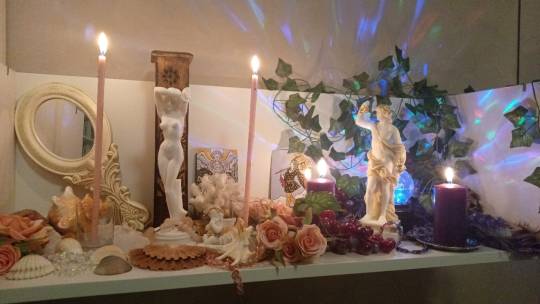

#hellenismos#greek gods#greek mythology#greek paganism#hellenic community#hellenic paganism#hellenic polytheism#hellenic worship#hellenic deities#ancient greek#greek myths#hellenic gods#hellenic pagan#hellenic polythiest#hellenism#aphrodite#aphrodite altar#aphrodite devotee#dionysus#dionysus devotee#aphrodite and dionysus
2K notes
·
View notes
Text
Others devotees on social media: *always well dressed and covered when approaching & honoring their god/godesses*
Me: *always putting the most obnoxious clothes & being half-naked when praying Aphrodite* yea, that’ll do it
#aphrodite devotee#aphrodite deity work#hellenic paganism#hellenic polytheism#hellenismos#pagan blog#lady aphrodite#ancient greek#greek polytheism#aphrodite deity
76 notes
·
View notes
Text


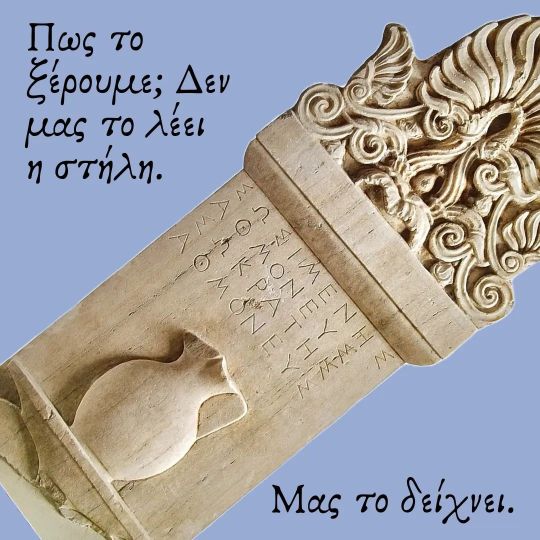
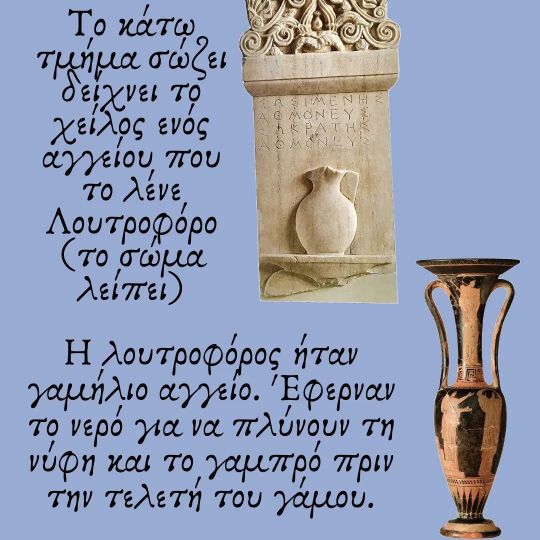
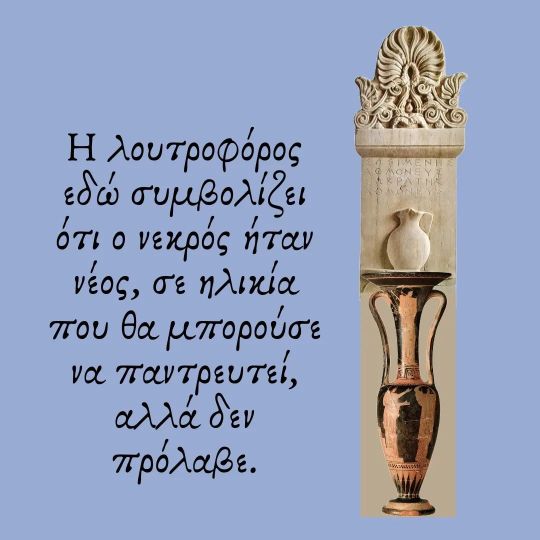
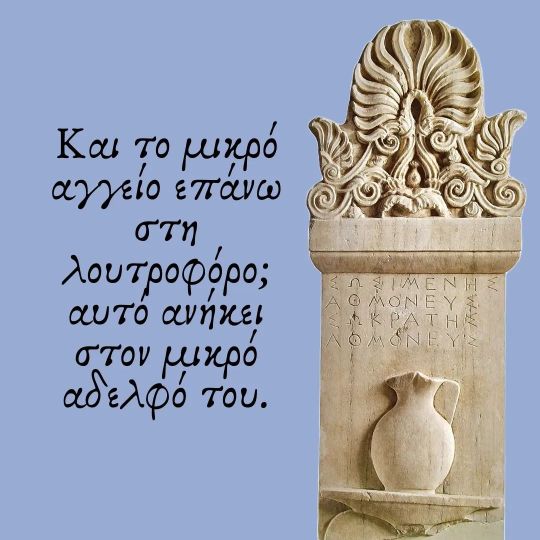
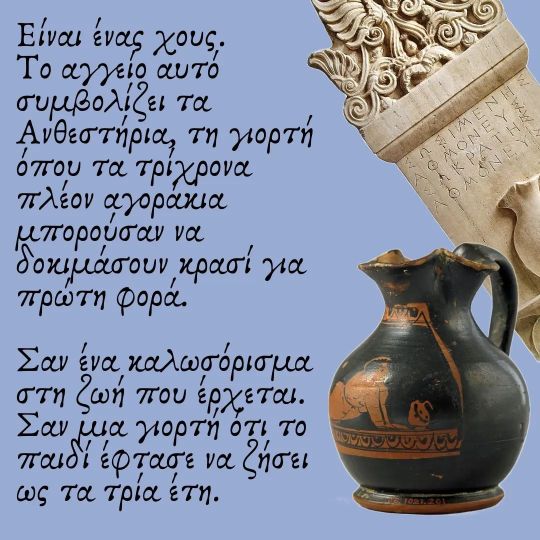

The other day archaeostoryteller made a great post that touched my soul 😢
It was about a funeral stele showing the death of two young brothers, one at a wedding age (Sosmenes) and the other younger than three years old (Sokrates). The loutrophoros (high slim jag) symbolizes the older brother's age since they used it to wash the bride and groom, and the khous (small round pitcher) where they offered wine to three-year-olds in the festival of Anthesteria.
Even today the Greeks bring wedding elements (such as stefana and koufeta) to the funerals of the young and unmarried.
#greece#greek history#ancient stuff#antiquity#ancient greek religion#ancient greek custom#greek custom#greek tradition#hellenismos
81 notes
·
View notes
Text
Apollo and Hyacinth ☀️🪻
There are two versions of this myth about the love of a god and a boy. One says that Apollo had fun throwing the discus. He threw it so far that it cut through the clouds. When the disc started to fall, young Hyacinth started running towards it to pick it up, but unfortunately, it bounced off the ground and hit the boy in the head, causing his death. The second version of the myth says that the wind god Zephyrus and Apollo courted young Hyacinth. Apollo taught the young man how to shoot a bow and play the zither, thus gaining Hyacinth's recognition. The second of the suitors, Zefir, did not gain the prince's sympathy, which made him extremely jealous. When Apollo was throwing the discus, he was bewildered by anger and jealousy and so directed the discus thrown by his rival that it mortally wounded the young man. Hyacinth's flowers grew from his blood, and Phoibos grew in despair he took his lover's body to Olympus.


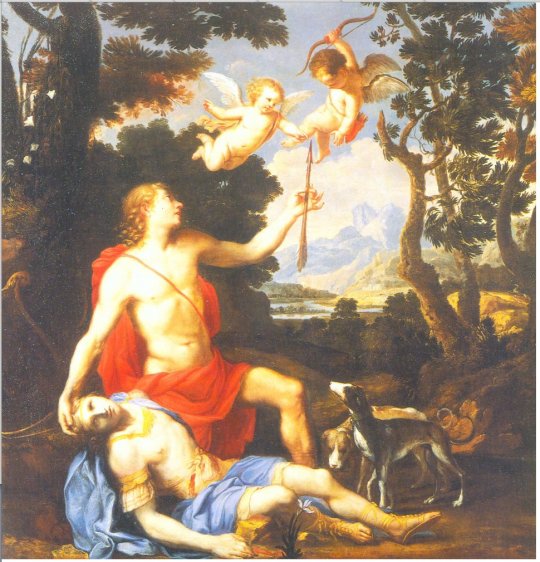

#greek myth#ancient greek mythology#greek mythology#apollo#hyacinthus#mythology#classical mythology#hellenismos
68 notes
·
View notes
Text
Summer Solstice Deities and Festivities
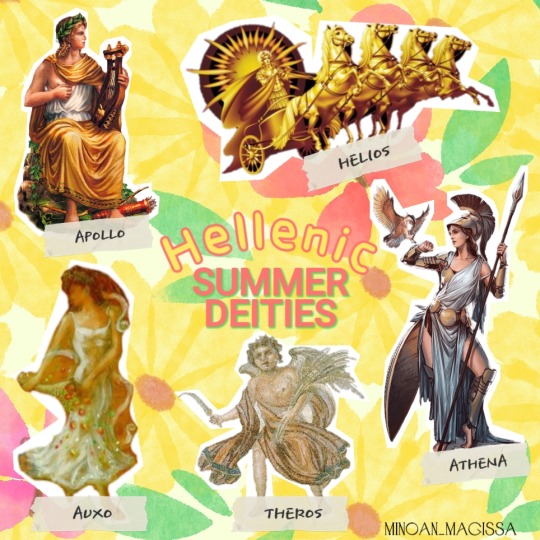
Summer Solstice/Καλοκαίρι/Θέρος/ Litha Blessings to my Northern Hemisphere friends! 🌞
Today also happens to be Arrephoria (Ἀρρηφόρια), a festival in honour of Athena. More on that later in the post!

Some info about the summer-related deities in the graphic:
☀️Auxo (Αὔξω) is one of the Horae (Ὧραι), and the goddess and personification of summer. She is also a protectoress of vegetation, growth, and fertility.
☀️Theros (Θέρος) is another personification of summer and is usually depicted as a winged boy holding an ear of grain in one hand and a sickle in the other. Theros is the word for summer in Ancient Greek.
☀️Athena (Ἀθηνᾶ) is the Olympian goddess of wisdom and warfare. Her main festival is the Panathenaia, which was celebrated during Hekatombaion in midsummer. The solstice also starts off with Arrephoria. Sinoika is yet another celebration during the summertime that honours her.
☀️Apollo (Ἀπόλλων) is the Olympian god of sunlight, healing, music, and poetry.
☀️Helios ( Ἥλιος) is the Titan god and personification of the sun. He is also the god of eyesight and oaths.
What I Did Today

I decorated my altar for the solstice and featured summer deities on the center of it.

I ate a (mostly) Mediterranean meal outside in the sunshine: kalamata olive spread, anaheim peppers, & extra virgin olive oil on gluten-free toast, gigantes beans with feta, and Persian cucumbers sprinkled with Greek oregano and paprika. 😋
I also did a lot of research to put together this post. That honestly took up most of my day. 😆
And now onward to Arrephoria!

Arrephoria (Ἀρρηφόρια) stems from the words "ἀρρητον" (mystery) and "φέρω" (I carry/bring). It is a midsummer fertility festival that honours Athena and takes place on the first day of the Estival Solstice.

In Ancient Athens, two young girls from aristocratic families were elected to reside as arrephoroi (άρρήφοροι: virgin acolytes of Athena Polias) at the Arrephorion on the Acropolis for a year at a time. Their main responsibilities included maintaining Athena's sacred olive tree and with the aid of other women, weaving Athena's new peplos.

On the evening of Arrephoria, the girls donned in white clothing placed what Athena's priestess gave them (a mystery item in closed chests) atop their heads. Then, they both carried the chests down (without looking at the items) to the temenos (τέμενος: holy grove) of Aphrodite via a concealed stairway inside the north wall and proceeded to carry something else (possibly dew from the spring) back up to the Acropolis.
With Hekatombaion (the 1st is the Athenian New Year) around the corner, Arrephoria also served as a "tying up" of the old year, ensuring nothing was carried over into the new one.
What you can do for Arrephoria:
📑finish any unfinished projects
👕declutter (i.e. donate clothing you no longer need)
🧹if you didn't clean your altar(s) for Kallynteria, now is the time to do it
💧pour a libation of dew or water for Athena
🍱have a hearty feast and offer some to Athena
*Kallynteria and Plynteria were two rituals that prepared for Arrhephoria.
The myth the ritual itself is based on:
Kekrops (Κέκροψ), the first mythical king of Athens, had three daughters named Aglauros (Ἄγλαυρος), Erse (Ἕρση), and Pandrosos (Πάνδροσος) - each name referring to dew. One night, Athena gave them a closed basket. While she forbade them to open it, Aglauros' and Herse's curiosity got the better of them, so they took a peek, only to see a baby (Ericthonios, Hephaestus' mysterious son).

Seeing as they broke her trust, Athena punished them by making snakes appear out of the basket, merely to scare them. Startled, the two girls jumped off the Acropolis and met their untimely demise.

Pandrosos didn't partake and was spared. Eventually, a shrine was errected in her name (located next to the sacred olive tree). Therefore, on Arrephoria, Pandrosos (in addition to Athena) were commemorated, and the two arrephoroi fulfilled the unfinished duty of the other two.
Sources: "Girls and Women in Classical Greek Religion" by Matthew Dillon, Hellenion.com: Arrephoria, Archaeology.org: Acropolis Arrephorion Restoration
#summer solstice#summer#midsummer#litha#arrephoria#athena#ancient athens#hellenic polytheist#hellenic pagan#hellenic polytheism#hellenic religion#greek mythology#hellenismos#ancient greece#theros#athena devotee#athena devotion#Spotify
142 notes
·
View notes
Text
Contemporary Hellenic polytheism ≠ ancient Greek religion.
Ancient Greek religion is the parent religion of Hellenic polytheism, but they are by no means the same thing. I think it benefits our community to recognize the clear differences (and similarities) between the discontinued parent religion and our currently practiced child religion.
(The terms "parent" and "child" are being used analogically here. Contemporary Hellenic polytheism is a "child religion" in that it comes from the antiquitous ancient Greek religion.)
#ancient Greek religion#Hellenic polytheism#Hellenic polytheist#Hellenic polytheistic#Hellenic paganism#Hellenic pagan#Hellenism#Hellenismos#Hellenic revivalism#Hellenic revivalist#Hellenic reconstructionism#Hellenic reconstructionist#Classical Studies#Classicsblr#Religious Studies
190 notes
·
View notes
Text

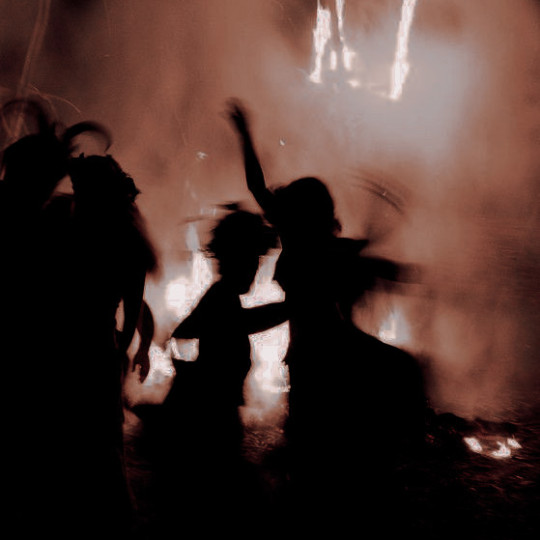

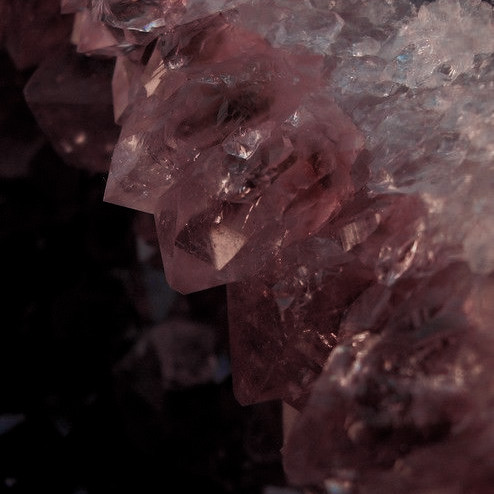


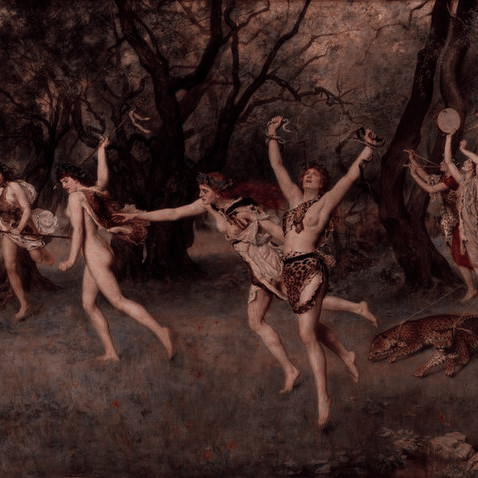


❝ dear Dionysus, son of Semele, see the smoke drenched stars? sing with me tonight.
Dionysus — greek mythology aesthetic.
#dionysus#dyonisus#hellenism#hellenic pagan#hellenic polytheism#hellenismos#wicca#greek mythology#greek gods#ancient greek#dark academia#witch#witchcraft#pagan#aesthetic#moodboard
547 notes
·
View notes
Text
sometimes I think of this myth of 2 lovers, one is publicly executed and its ordered to let their body be, no one is to bury them or they too will be killed. And their lover sneaks into night to sprinkle dirt on them. It's a Greek myth. I forgot everything except this part. Please does anyone know this one?
#hellenic polytheism#helpol#hellenism#hellenismos#hellenic pagan#greek polytheism#greek mythology#greek gods#ancient greek#ancient greece
11 notes
·
View notes
Text

I am poorer than I was this morning.
#paganism#pagan#hellenism#hellenismos#hellenic polytheism#hellenic religion#hellenic gods#greek polytheism#asteria#nyx#hecate#hekate#goddess#theoi worship#theoi#ancient greece#victorian#antique#bronze#hades worship
14 notes
·
View notes
Text

War and the Warrior: Functions of Ares in Literature and Cult by Alexander T. Millington
#ares#ares deity#ares devotee#ares devotion#ares worship#athena#athena deity#athena devotee#athena devotion#athena worship#hellenism#hellenismos#helpol#hellenic polytheism#ancient greece
8 notes
·
View notes
Text
Afrodyzja, miasto położone na terenie Azji Mniejszej, a dokładniej w Karii-region w Turcji.

W 2017 Ἀφροδισιάς trafiła na listę światowego dziedzictwa UNESCO. W starożytności słynęła z marmuru i niezwykle utalentowanych artystów których rzeźby były znane w całym obszarze Morza Śródziemnego. Znajdowały się tam słynne szkoły filozoficzne i artystyczne.
W czasach hellenistycznych jak i rzymskich była miejscem kultu Afrodyty-później Wenus.
Historia tego miejsca sięga aż neolitu, a widoczne ślady kultu istnieją od czasów bizantyjskich. Wtedy był to kult Isztar. To niesamowite jak bardzo to miejsce ma silne połączenie z energiami utożsamianymi z każdą z bogiń czczonych w nim w różnych okresach. Było to miasto pogańskiego kultu aż do V wieku. Ostatecznie w VII wieku popadło w ruinę przez liczne trzęsienia ziemi.
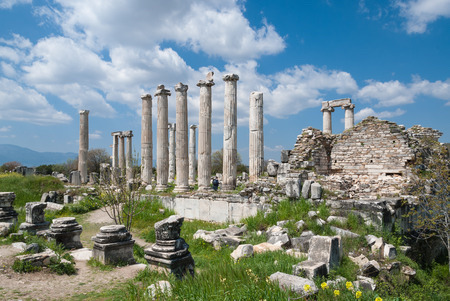
Zachowało się w nim trochę rzeźb-którymi miasto było bogato udekorowane, teatr, odeon-mniejszy teatr z zakrytym dachem, agora, świątynia Afrodyty, termy, stadion, i słynna brama: Tetrapylon (τετράπυλον), która stała na głównej drodze do miasta. Stadion jest jednym z najlepiej zachowanych budowli tego typu.
W czasach chrześcijańskich miasto zaczęło podupadać, a powodem były zakazy kultów pogańskich, jak i częste trzęsienia ziemi. Świątynia Afrodyty została lekko zmieniona i zrobiono w niej kościół. Chwilowo zmieniono nazwę na Stauropolis: Krzyżogród, ale nazwa nie utrzymała się. Zrobiono to by wymazać połączenia tego miejsca z kultem pogańskim.
Na miejscu znajduje się muzeum w którym przechowywane są liczne znaleziska, choć niestety Muzeum Brytyjskie zabrało sporo z odkryć do siebie.
To miasto nie jest jakoś bardzo znanym miejscem turystycznym, i oczywiście jest wiele innych miejsc kultu mojej patronki jakie chciałbym odwiedzić, ale o bogowie, przysięgam że ja tam się kiedyś wybiorę🕊️
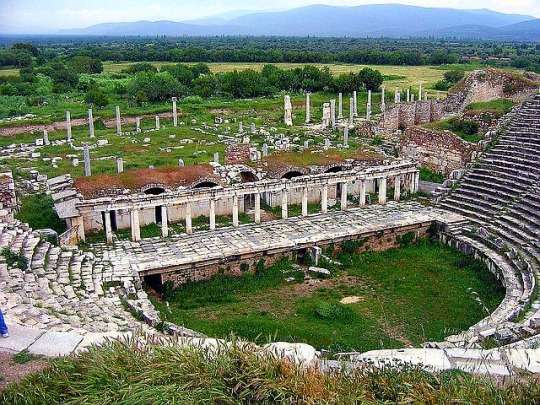
3 notes
·
View notes
Text
im in greece rn and i just bought two statues of aphrodite and artemis and THEY ARE SO PRETTY
#greek paganism#hellenic community#hellenic paganism#hellenic polytheism#hellenic worship#hellenismos#greek gods#greek mythology#hellenic deities#ancient greek#aphrodite#aphrodite devotee#artemis devotee#artemis
84 notes
·
View notes
Text
does anyone have any good resources for learning ancient greek??
i love the idea of praying and honoring the gods in their language.
9 notes
·
View notes
Note
Hii,
I was wondering if you could tell me (if you know, of course) what the ancient Greeks of the Mycenaean times called themselves.
I was trying to look it up myself for a project but all the info I got was so inconclusive and one article went against the other and I'm honestly so confused.
I really wanted to answer this because I remember we talked about it in A' class in Gymnasio!! (Our History book also wrote a bit about that). We are almost sure, as we have very strong historical elements for speculation.
If you've read the Iliad and Odyssey in English, the Greeks (who came from the Mycenean culture at the time) are called "Achaeans" (Αχαιοί) and the region "Achaea" (Αχαΐα). So, that's probably how they called themselves as well.
The Hettites called the Myceneans "Ahiyawa" (Acheans) and wrote that they were a strong seafaring power. The Egyptians called them "Aqwavasa" or "Eqwesh". You might read the Indoeuropean "aqw-" sound/root hidden somewhere there, which means "water" (see the latin "aqua", the greek "acheron" etc). It is possible that the name "Achaeans" meant "those who come from the sea places". I don't have the time to research more on that but you can do some more reading on that if you want to see if it checks out.
In the Epics other collective names were also used, the most common being Danaans ("Δαναοί" is the Greek term) and Argeans / Argites / Argives / Argeioi. ("Αργείοι" is the Greek term).
Danaans were an earlier, different tribe than Achaeans, and when Achaeans came to the Peloponnese circa 2.000 BCE, they mixed. Danaans came to the region - possible Argos on the mainland the islands - after the "Pelasgoi" (Πελασγοί) the first inhabitants of the region. "Pelasgos" means "one from the open sea" so it's possible the Danaans had mostly gathered in the islands and other places near the sea. Danaans built Argos. But after their mix, Danaans and Achaeans were mostly the same, so the identifications came to be synonyms and used interchangeably by foreigners.
Egyptians called the Danaans "Denyen" and "Tanaju". Moreover, a list of the cities and regions of the Tanaju is also mentioned in this inscription; among the cities listed are Mycenae, Nauplion, Kythera, Messenia, and the Thebaid (region of Thebes).
Argos was a great power at the time and that's why you also see the Argeioi in the ancient texts. Before the Trojan war, they all gathered in Argos and sailed from there. It's possible the city was so powerful back then that it also became representative of the Greeks sometimes in the eyes of foreigners.
For the names of Achaeans these are two prominent sources:
1) Beckman Gary Michael, Cline Eric H., Bryce, R Trevor. (2012). «The Ahhiyawa Texts». Writings from the ancient world / Society of Biblical Literature, (28): 5. ISSN 1570-7008.
2) Jorrit Kelder. Ahhiyawa and the World of the Great Kings. A Re-evaluation of Mycenaean Political Structures, Talanta XLVI, 2012, X-X, σελ. 1.
Of course not all Achaeans lived in Argos, so they didn't have to self-identify as Argeioi. They could remember their Danaan origin and identify with that + the name of their town. Or they were just living in a smaller town and they self-identified with their Achaean origin + the name of their town. And it's possible that many Danaans lived in Argos. I don't recall any ancient texts talking about tensions between Danaans and Achaeans, or any discrimination like "Their family is Danaan and we are Achaeans so our children shouldn't marry." I think they just co-existed and merged without much fuss :P
For the origin story of Danaans in the region, you can read more by seeing the myth of Danaos.
https://en.wikipedia.org/wiki/Danaus
Greek "nations" and genera across the ages, the origins of the Danaans
This entry in wikipedia has very well concentrated all the genealogies and how the Greeks saw the creation of nations and lines across the ages.
**"Ethne" ("Ethnoi") are what I call in English "tribes" for better understanding. ("Ethnos" is singular.) It could also be translated as "ethnicities" (yes "ethnicity" comes from Greek) but in English this shows a bigger difference in cultural backgrounds than a "tribe". The ancient "ethnos" between the Greeks is more akin to the relationship different tribes of the same nation and ethnicity have. In modern times we call them "phylles" lit. "leaves" from different branches of the same tree or "genoi" (you'll know the English word genealogy from Greek). We rarely use the "ethnoi" word today but the ancients saw more differences between them than we see in them today so they kept a wider distinction.
In Greek mythology, the perceived cultural divisions among the Hellenes were represented as legendary lines of descent that identified kinship groups, with each line being derived from an eponymous ancestor.
Each of the Greek ethne were said to be named in honor of their respective ancestors: Achaeus of the Achaeans, Danaus of the Danaans, Cadmus of the Cadmeans (the Thebans), Hellen of the Hellenes (not to be confused with Helen of Troy), Aeolus of the Aeolians, Ion of the Ionians, and Dorus of the Dorians.
Cadmus from Phoenicia, Danaus from Egypt, and Pelops from Anatolia each gained a foothold in mainland Greece and were assimilated and Hellenized. Hellen, Graikos, Magnes, and Macedon were sons of Deucalion and Pyrrha, the only people who survived the Great Flood; the ethne were said to have originally been named Graikoi after the elder son but later renamed Hellenes after Hellen who was proved to be the strongest. Sons of Hellen and the nymph Orseis were Dorus, Xuthos, and Aeolus. Sons of Xuthos and Kreousa, daughter of Erechthea, were Ion and Achaeus.
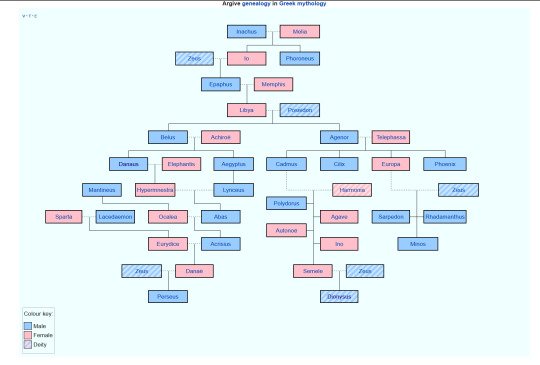
Obviously, one nation cannot come just from one man, and we don't have evidence that Danaans came from Egypt (only some vague linguistic traces because of their name). But it's not impossible. It's very likely that other ethne came from different regions (Egypt, Phoenicia, Anatolia) and slowly mixed with each other to create a more homogenized identity, as people settled more and more in agricultural environments. This early Hellenic identity of "Achaeans" we see for the first time in the Iliad when people from all these kingdoms with similar cultures united under a common cause.
It's important to not call "Danaans" Egyptians, though. At the point we see the peoples called "Danaans", they have developed the early Hellenized culture, distinct from the Egyptian culture of the time. They could potentially have been "Egyptians" a hundred generations back (if we believe their mythological origin story) but when we see them they are interchangeable with Achaeans. They didn't consider themselves Egyptians, and other locals didn't consider them Egyptians (or foreigners) either.
Egyptians don't "claim" the "Danaans" either. I think I should comment on that before any Americans go "Greeks came from Egypt, actually!" In fact, as I mentioned above, Egyptians named them "Denyen" or "Tanaju", like separate peoples from them, and mentioned the Greek cities they lived in.
Achaeans themselves were said to come from the north in 2.000 BCE, Dorians came from the North as well. (We don't know what North™ exactly 😂) Peloponnesians were Dorians but Macedonians were partly Dorians, too.
Achaea (Ἀχαΐα) still exists, btw! I mean... most of our ancient regions and cities still exist but it's nice to see the region kept such an old, really old name! Locator map of Achaia prefecture (Νομός Αχαΐας) in Hellas:

#ethne#ethnoi#tribes#Achaeans#mycenean#trojan war#the iliad#the odyssey#answered#hellenes#hellenismos#ancient greece#academia#classics#history
84 notes
·
View notes
Text
Okay, here's a thread on "how to read the Greek alphabet?"
The Greek alphabet consists of 24 letters:
α,β,γ,δ,ε,ζ,η,θ,ι,κ,λ,μ,ν,ξ,ο,π,ρ,σ;ς,τ,υ,φ,χ,ψ,ω.
So here we go:
Α,α-alfa [a]
Β,β-beta[b]
Γ,γ-gamma [g]
Δ,δ- delta [d]
Ε,ε-epsilon[e;short]
Ζ,ζ-dzeta [dz]
Η,η-eta[e;long]
Θ,θ-theta [th]
Ι,ι-jota[i]
Κ,κ-kappa [k]
Λ,λ-lambda[l]
Μ,μ-mi [m]
Ν,ν-ni [n]
Ξ, ξ- ksi [ks]
Ο,ο-omikron [o;short]
Π,π-pi [p]
Ρ,ρ- ro [r]
Σ,σ(at beginning and in the middle), ς(in the end)-sigma [s]
Τ,τ-tau [t]
Υ,υ-ypsilon [y]
Φ,φ-phi [f or ph]
Χ,χ-khi [ch or kh]
Ψ,ψ-psi [ps]
Ω,ω-omega[o;long]

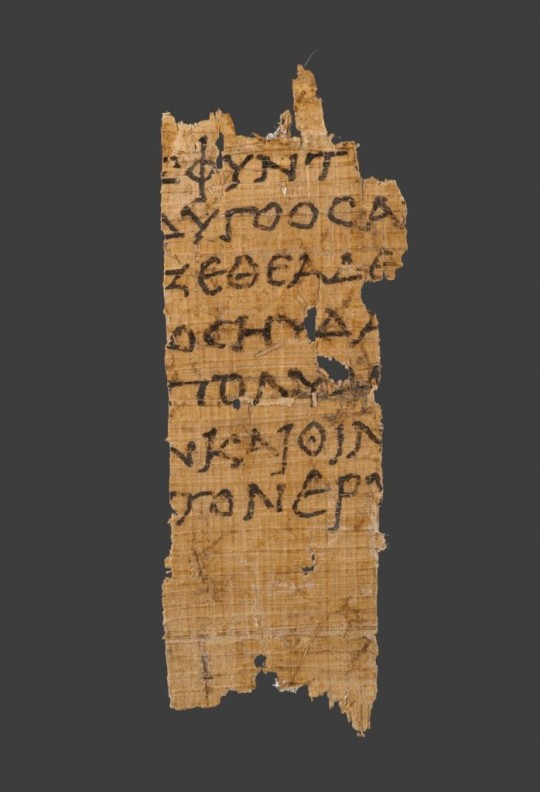
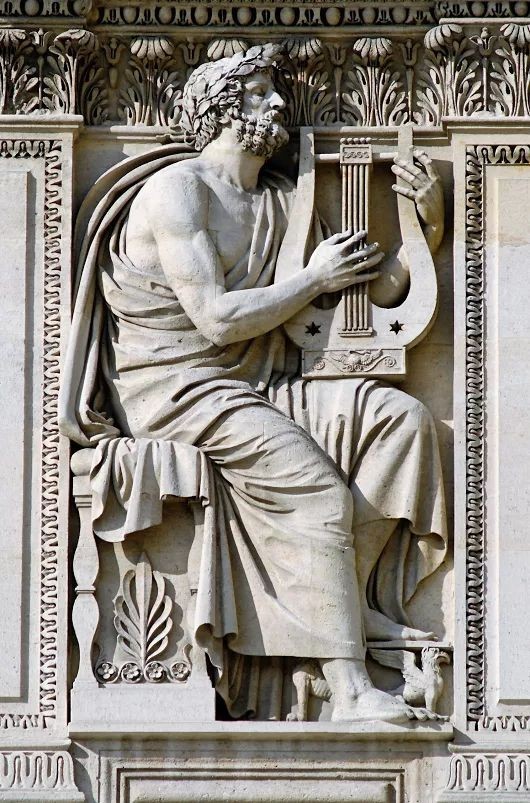
#ancient greece#ancient greek#classicalphilology#ancient history#hellenism#classics#greek history#classical studies#hellenismos
34 notes
·
View notes